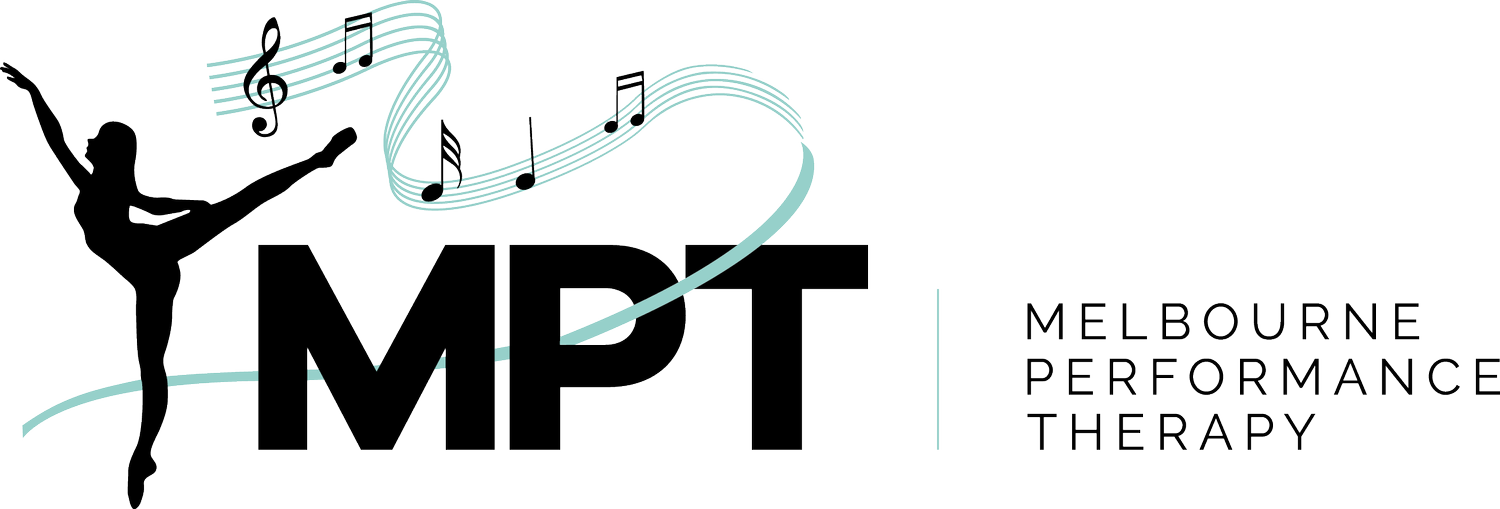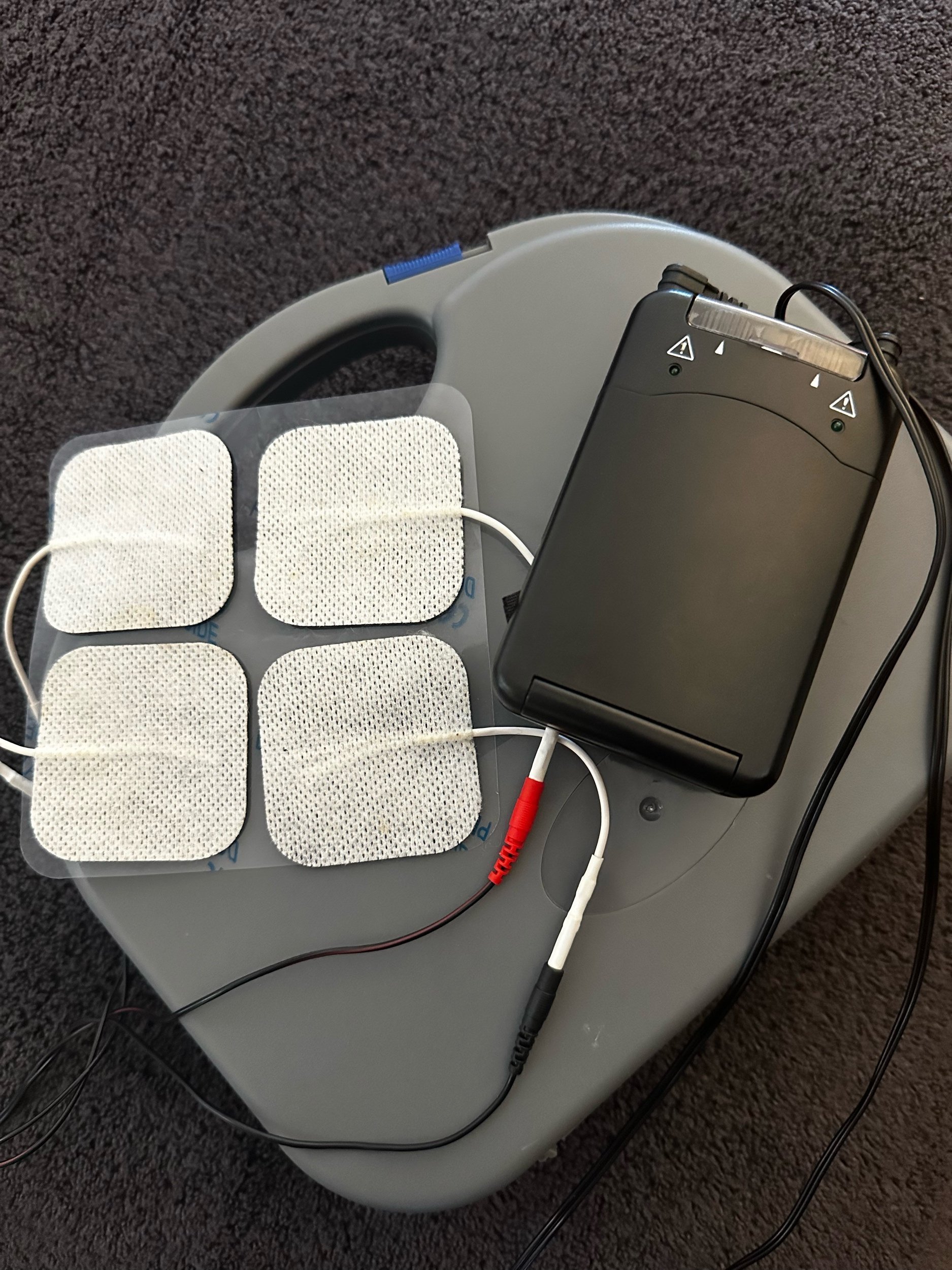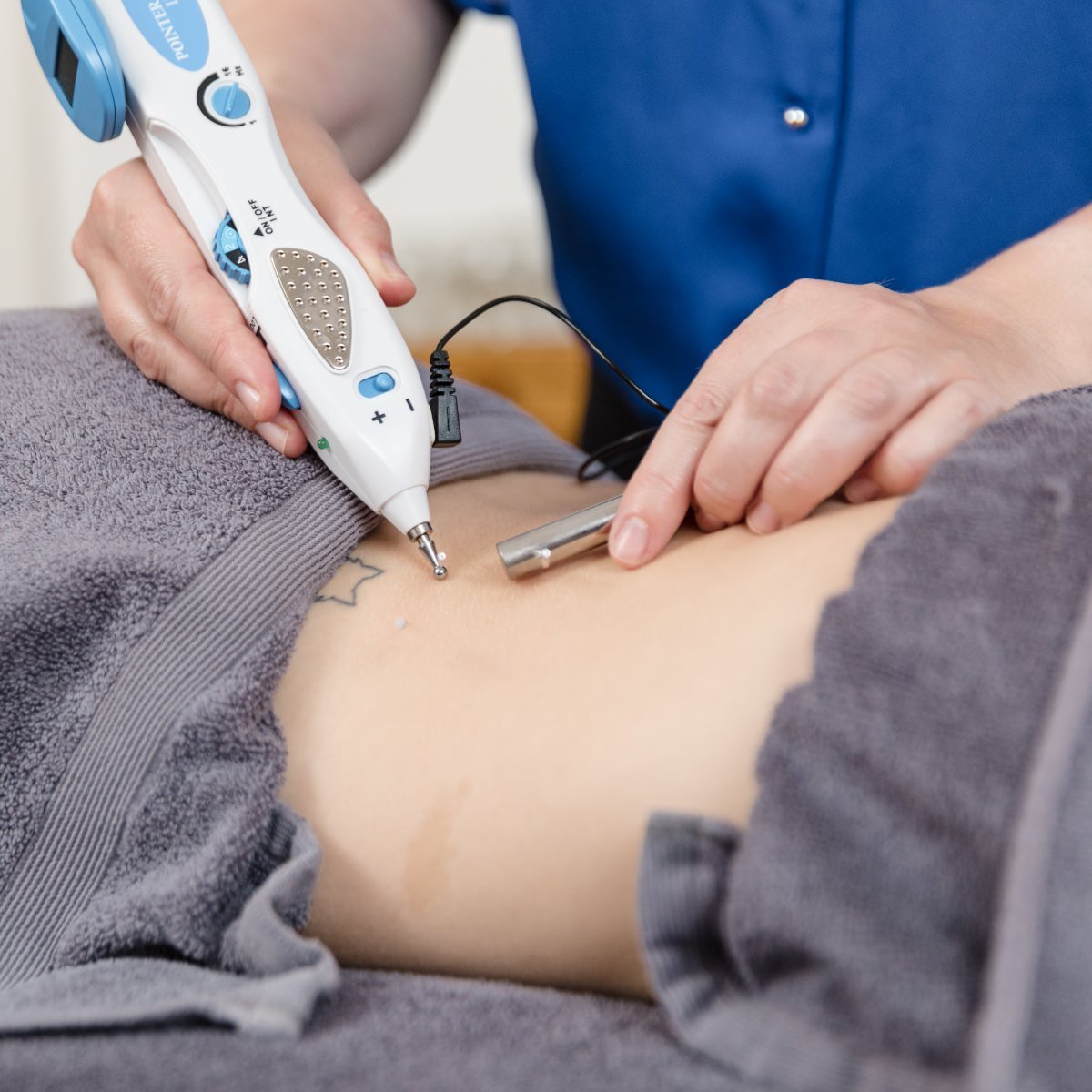Micro Current Electrotherapy for Chronic Pain
Chronic pain is a prevalent issue worldwide. There are thousands of articles on how best to treat, manage and cure chronic pain. It is the topic of podcasts, books, blogs and daily conversations. This is not surprising given that chronic pain affected around one in five Australians.
While there is absolutely no doubt that chronic pain is a complex issue that requires comprehensive management strategies, excitingly we are seeing some amazing progress in ways to help treat and manage chronic pain using electrotherapy.
Electrotherapy used in combination with dry needling.
Electrotherapy it not a new technique, it has been around for a very long time (the ancient Greeks worked out that touching an electric eel would give you an electric shock which produced a numbing effect). We have seen the use of electro therapies evolve and come in and out of fashion over the years.
Chances are if you’ve been through labour you may have used or been offered the opportunity to use a TENS machine (Transcutaneous Electrical Nerve Stimulation), or you may have an old TENS unit laying around at home or your parents home (particularly if they are Boomers – TENS was big in the 80’s and 90’s. TENS became popular because it is non-invasive, drug free and offered moderate pain relief for many types of musculoskeletal pain.
Microcurrent therapy is another form of electrotherapy that we are now starting to see greater evidence for, particularly in it’s use for treating and managing chronic pain.
Both TENS and microcurrent therapy are forms of electrotherapy, however they differ slightly in their characteristics and mechanisms of action. Microcurrent therapy is proving to be a useful tool in managing chronic pain. Here’s why:
Microcurrent therapy is proving to be a useful tool in managing chronic pain. Here’s why:
Subsensory Stimulation
Microcurrent typically uses very low levels of electrical current, usually in the range of 1 to 1000 microamps. This amount of amps is typically below the threshold of sensation for most people. This is in contrast to TENS which uses higher levels of current and hence produces sensations like tingling or tapping.
The subsensory nature of microcurrent therapy allows for minimal discomfort for patients (which when you’re already in pain is a good thing!) and we see less nervous system ‘wind up’ related to it’s use (here more nervous system wind up is associated with more cellular processes that promote the sensations of pain). This low or no sensory experience of microcurrent therapy allows for longer use and for presentations and people that are highly sensitive to pain.
Cellular Effects
Microcurrent therapy has been shown to enhance cellular functioning, by improving cellular communication and promoting the exchange of nutrients and waste products. This helps to optimise cellular health and reduce local inflammation. Chronic pain conditions often are associated with inflammation and reduced cellular functioning in areas of pain.
The microcurrent influences cellular processes such as protein synthesis, ion transport and cell signalling behaviour. All of these processes then in turn affect local cellular repair, overall cellular functioning and influences the messages that the cell releases to other nerves and nearby cells.
Neuromodulation
Microcurrent can also modulate the activity of nerves and help improve their functioning, without causing muscle contractions, tapping or tingling sensations or general discomfort. By influencing or modulating the activity of a nerve we can help relieve pain and restore normal functioning of that nerve. This is particularly useful when we treat a nerve root (the nerve where it exits your spine) as this allows us to create a change in the nerves that branch from that single nerve root.
Pain Modulation
Microcurrent therapy also produces a ‘top down’ in addition to the local effects discussed above. A top down effect in this instance refers to the pain modulation activity from the brain. Microcurrent therapy can stimulate the production of endorphins (the body’s natural painkillers) in the brain. These endorphins are signalled for release by the brain and can help block pain signals that are being sent to the brain. This is especially useful for chronic pain and for achieving longer lasting pain relief.
Final thoughts…
Microcurrent therapy is safe and easy to use in clinic. If you find it is particularly helpful for your presentation you may also be able to purchase a microcurrent device for you to use at home with guidance from your practitioner.





